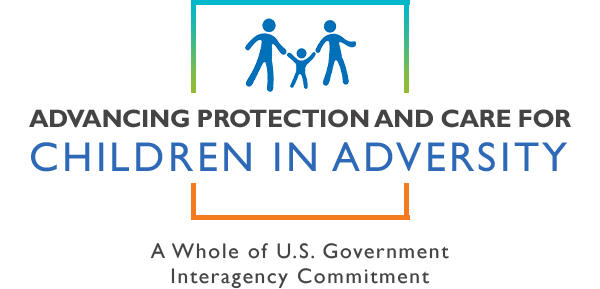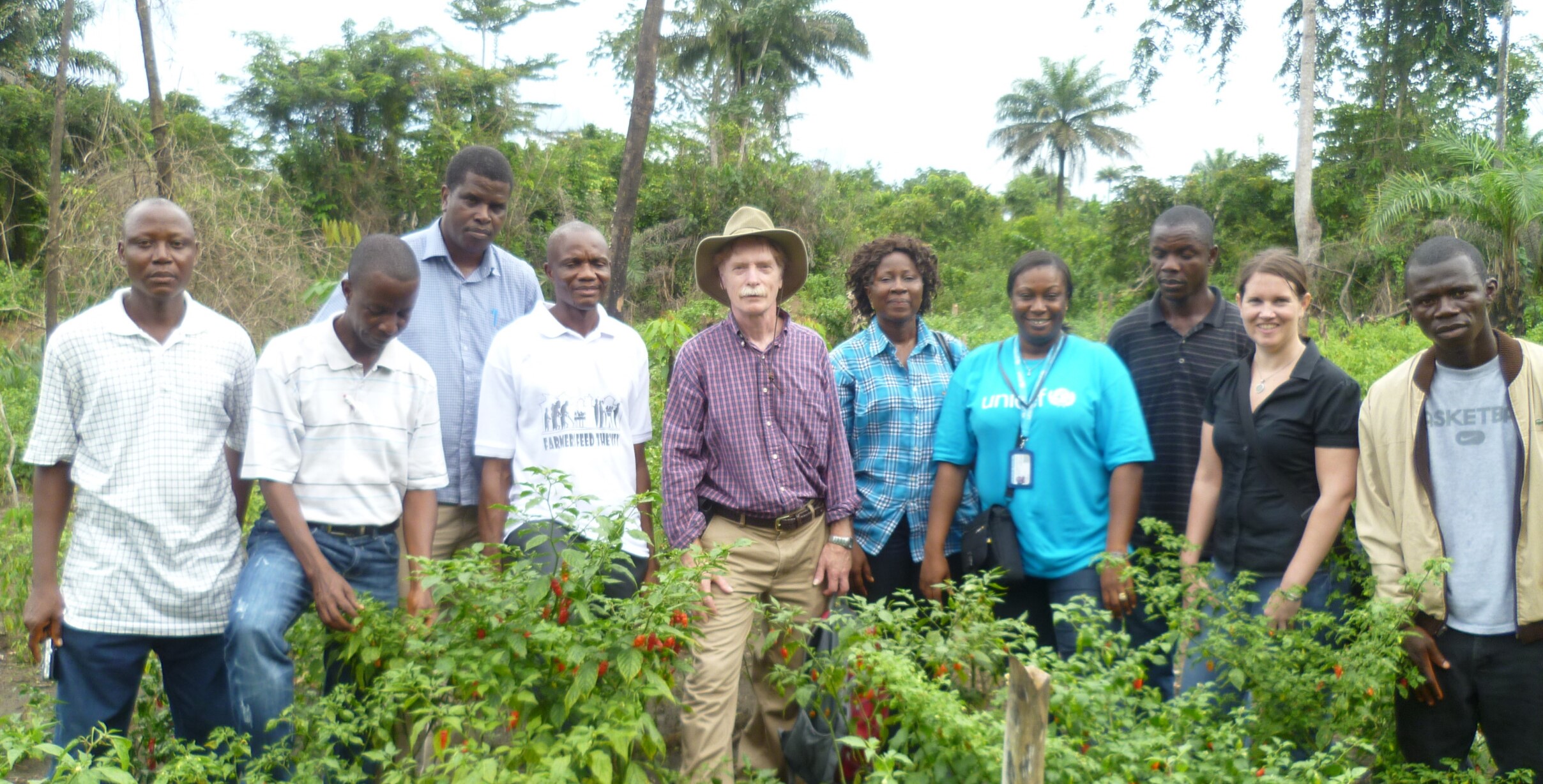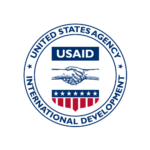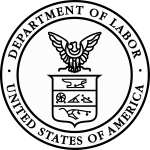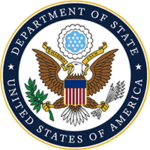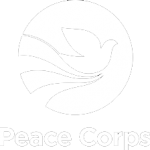John Williamson: A Lifelong Advocate for Vulnerable Children
Interviewer: Suzie Galler
May 15, 2022

For more than 40 years, John Williamson has been a dedicated advocate for the health and well-being of children around the globe, most recently serving as Senior Technical Advisor for Vulnerable Children at USAID. He has worked to enable families torn apart by war, the HIV/AIDS crisis, genocide, and poverty, to reunite and overcome daunting hurdles, both physical and political, to rebuild their lives. His focus on family reunification and passion for prioritizing family care over institutional care has changed countless lives. On John’s watch, attitudes have changed, paradigms have shifted, and conditions have dramatically improved for orphaned and displaced children. Yet his humility precludes him from taking credit for any of it.
With his retirement this year, John leaves a legacy of practical knowledge for child welfare advocates in the form of numerous programs he has helped initiate, organizations he has helped develop, and publications he has authored and co-authored—an extensive body of work that will inform and enlighten practitioners in the field for many years to come.
We were privileged to speak with John about his many achievements and what he believes are the challenges that lie ahead in caring for the world’s most vulnerable children.
Q: Looking over your 43 years of working in the field of child protection service is incredibly impressive, John. You’ve got a pretty robust body of work to share.
JW: Well, I’ve been at it for a long time.
Q: What drew you to this work in the first place?
JW: Initially, it was just an interest in getting out of the country, maybe doing something useful in the process.
Having been in the Peace Corps in Malaysia, my wife and I were passing through Thailand in late 1979 during the Cambodian emergency, and we had an opportunity to volunteer at a refugee camp that was being established and just found the work really engaging. I applied and was offered a job by the United Nations High Commissioner for Refugees (UNHCR).
Q: How did that shape your vision for the work you’ve been doing for USAID all these years? What were your first impressions of the child welfare system when you first started and how has that evolved?
JW: My first impression was that we were kind of on our own. UNHCR headquarters was unable to provide guidance in terms of how to address the needs of unaccompanied children.
The international community and UNHCR had made the commitment that we should first try to reunite unaccompanied children with their families, and nobody was telling us how to do that. So, you had UNHCR together with some NGO personnel working in consultation with UNHCR’s Thai social workers, just trying to figure out how to do it. A number of measures were initiated that ultimately proved effective, and we were able to reunite quite a few children either with their parents or surviving relatives.
Q: What were some of the methods that you used there?
JW: I can’t take credit for inventing this. We collaborated with the International Rescue Committee (IRC) and the Norwegian Save the Children, and each of them developed particular methodologies.
First, UNHCR brought in a photographer to photograph each separated child, holding a sign written in Khmer and English, with the camp where they were, and the child’s name. Those pictures were used in three ways: the Swedish Save the Children and Thai social workers conducted interviews and prepared dossiers with information on each child and their photo. We had to figure out what information was relevant to collect. We developed the forms, and they did the interviews.
Those same photos were used by IRC and placed on bulletin boards in the camps and at the border; and then the Norwegian Save the Children synthesized the information on each child with the photographs, and bound those pages into tracing books. They then had refugee volunteers take the books into the camps where people looked page by page to see if they knew any of the children.
So those sources were used for trying to trace family members. I can’t tell you how many refugees there were. I know in the largest camp, there were around 120,000 and there were six camps all together.
But in these large refugee camps, people were finding each other every day. Some of the reunifications were spontaneous. We did a major reunification process of families and individuals amongst the camps that was not limited to children. Because people were writing letters back and forth and finding that they had a relative or an intermediate family member in another camp
Q: How did it feel for you to see these children reunited with their families?
Ahhh. It was really powerful to be able to see a child come back to their family. I distinctly remember the very first child we were able to reunite. The Thai social workers were using information that had been gathered through documentation – and they were able to find the surviving family. The child had reported in the documentation that his family was dead.
I felt proud of the Thai social workers who had managed to do the work to bring the child and the family back together. I felt grateful that we were able to accomplish that and it was the first of many more children that would ultimately be reunited.
Ultimately, while I was there maybe 1,700 unaccompanied children were reunited. I felt a tremendous sense of privilege to have been able to work with the Thai social workers and these international organizations. It felt like we were doing something that was really, really important.
Q: You’ve also dealt with reunification efforts you were involved with in other countries. Can you describe those methodologies?
JW: Sure. Following the post-genocide armed conflict in Rwanda, USAID supported a reunification program for unaccompanied children carried out by the International Committee of the Red Cross and Save the Children UK. And that had basically accomplished what it could, but for the youngest children, who maybe didn’t even know their own name because they were so young when they were separated or if they did, they didn’t know what town they had come from.
So, we weren’t able to proceed in the usual way, because they could not provide any useful information for tracing in an interview. So, the IRC, Marie de la Soudière, and Brigette De Lay developed several approaches to get information from young children, one of which was called Mobility Mapping.
It involved sitting down to interview a child, giving them a blank piece of paper, drawing a circle in the middle and asking them to pretend that that circle was the house that they lived in before, when they lived with their family, and asking them just to draw what they could remember.
There was some academic research that supported the fact that young children process information differently than older children and drawing really facilitates their memory. So they were able to draw elements that could be then used for tracing. For example, one child drew a picture of his father in a boat. And so that meant that child had lived close to the lake in Rwanda, which geographically narrowed the scope. And then the IRC used radio announcements to put this information out. They used posters with pictures of the children and people would call in and respond and through that painstaking process, they were eventually able to reunite quite a few of those “untraceable” children.
Q: You’ve been working with a lot of different refugee issues for many years. How have you seen the refugee situation evolve throughout the years?
JW: The work that I’ve been involved with, whether with refugees or displaced children, or just vulnerable children in their own communities has many similarities, although I think technically we have developed new methodologies, particularly with electronic case management information systems, things that we previously had to handle just with paper files. That’s facilitated things quite a bit in dealing with a lot of the same issues. And I think the field collectively has become more sophisticated, more effective.
Q: I understand that you were one of the organizers of the Better Care Network. Can you describe what that is?
JW: Yes. I can’t remember how many years ago it was, Save The Children, UNICEF, and USAID came together because we saw the need to share information and as much as possible to collaborate in relation to supporting family care for children. There’s been a proliferation of orphanages, particularly since the AIDS pandemic began, but even before that, a lot of information had been generated and it needed a place where it could be made available globally. So, that’s what the Better Care Network began to do. I was an initial coordinator for them just on a volunteer basis where I was receiving information from people around the world and sharing information with them. They were sharing documents that I would make available to people. But then, when we were able to hire a full-time manager, Aaron Greenberg, things really took off and he did an excellent job of building it.
Better Care Network now has the most extensive set of documents related to the care of children—at least internationally, particularly children who are separated from their families—about how to carry out the case management process, enabling a child to return to family care. And I mentioned the proliferation of orphanages. There have been decades and decades of research, going back to the 1940s and ‘50’s showing the basic reality that a child needs a family.
“IT’S IN A FAMILY CONTEXT WE DEVELOP TO BE THE PEOPLE THAT WE CAN BE. WE LEARN SOCIAL RELATIONSHIPS. WE HAVE OUR SOCIETAL CONNECTIONS. WE LEARN HOW TO BE A PERSON. AN ORPHANAGE CAN FEED A CHILD, CLOTHE A CHILD, PUT A ROOF OVER A CHILD’S HEAD, BUT THAT ROTATING STAFF – THAT’S NOT A FAMILY.”
There are some residential facilities that try to organize children in family groups. But that all comes to an end when a child graduates. They become a young adult and they move out into society. Family really is something we need for a lifetime. The Better Care Network makes available information on how to do that. But what’s exciting to me is that within the last couple of years, there’s been a real acceleration. And Better Care Network is at the vanguard of that. They, together with others, have mobilized a new collaborative platform for the care of children. It has a number of different subgroups where people are able to come together on a periodic basis, share information, find ways to work together and mutually support each other in advocating for care reform, which includes enabling children to remain with their families because poverty is the major driving factor that separates children from families.
It’s certainly not the only one, but it’s the common denominator among children that you find in orphanages – that poverty is driving children’s placements there. Some families just can’t afford to pay the formal or informal school fees that exist, and they’ll send a child to an orphanage because the orphanage provides an opportunity for education but that separates the child from the family, sometimes permanently. So, this global collaborative platform is providing opportunities for people around the world to work together and share information on how to better support family care for children.

John Williamson at Simpali, Nepal, 2006/John Williamson
Q: In one of your papers, you wrote about ‘good enough families’. What does that mean? Is that something you still subscribe to?
JW: Yes. It’s not a term that you hear much anymore, and I certainly didn’t originate it, but the basic point is probably that no family is perfect. And certainly, there are some families that are harmful to children. In most cases, children need to be removed and placed in a safe and loving family environment, but it is through families that we learn to become human beings, learn to connect to society. A child needs a family that is good enough to accomplish that. Maybe you’re not going to get a perfect family, but one that will provide those social connections as well as for their physical needs and help them emotionally and socially develop. And family is key to that.
The need for family doesn’t end when you turn 18.
Family is there to fall back on in difficult times, to provide emotional support. I think we gain a lot from them, that source of social connection and learning is critically important.
Q: You also talked about strengthening families and that that should be the first priority always and everywhere. Who bears responsibility for strengthening the family unit, particularly impoverished families who are struggling? Where does that come from? Are you looking to local governments? To foreign aid agencies? Who do you turn to?
JW: I think governments have a fundamental responsibility. But often they lack the resources. Sometimes they lack the knowledge of how best to do that. And that’s where international aid agencies and civil society come into play. Faith-based organizations, churches, other religious bodies. They play significant roles in strengthening society. So, in our current work with USAID, a lot of the focus is on strengthening government capacities.
We have agreements with organizations to provide either direct support to children and families, or more often, to enable the government to fulfill its roles and responsibilities. For example, in Rwanda, we’ve been providing funding to UNICEF since 2013. The government there had made a commitment that it wanted all children to be in families, it wanted to eliminate the orphanages. We agreed that that aim was consistent with our purposes. At that time, we were called the Displaced Children’s and Orphans Fund (DCOF). And we’d been supporting UNICEF to work with the government and to some extent with NGOs in the field to document each of the children in residential facilities. We then used that information to trace either their parents or relatives, someone in their kinship network, if at all possible, and then assess that situation, whether their child could return to the family of origin or to live with a relative.
And if not, then in a foster family, which in Rwanda is tantamount to adoption because families are not receiving any pay to provide ongoing care for a child. So, very carefully case by case, Rwandan social workers and psychologists carried out that process and enabled all of the children in orphanages to be placed in family care, either with their own family, with relatives, or in foster care. And they also helped the young adults who were living in those orphanages. There were more than 3,000 people living in the orphanages and about a quarter were young adults that didn’t know how to live in the outside world. They’d effectively been institutionalized. They were really rather afraid of trying to move out and support themselves in society. So that was the learning process that the social workers and psychologists worked on.
By 2020, almost all of the children had been placed in family care or any young adults had been enabled to live in society. And those Rwandan professionals—30 of them—were hired by the government and were deployed to each district in the country to work as Child Protection and Welfare Officers to deal with a whole range of issues. And at the community level, the government asked every village in the country to select one man and one woman to become a friend of the family, or “Inshuti z’Umuryango,” (IZU) in Kinyarwanda. These volunteers are the frontline of response. They’ve had a paraprofessional level of training. When they see a problem with a family in their community or with an individual child they try to respond as possible, maybe mobilize some support from within that community, including the community leadership. But if there’s an issue beyond their capacity to deal with, then they can contact the Child Protection and Welfare Officer to address the issue.
Q: Are these the same people, who are the support system for the Sugiro Muryango program we have written about in this edition of the newsletter?
JW: Yes, in those geographic areas where it will be operating it’s the IZU that will be doing the work directly with families carrying out this step-by-step, training process with families to care for their young children.
Q: You also advocated for establishing national standards for the care of children outside of their own families, including gatekeeping protocols to prevent inappropriate new placements and you say that that’s another vitally important area for action. Do you think that has been done? Where are we in that process of establishing those national standards for care?
JW: It varies a lot among countries. There are an estimated five and a half million children living
in orphanages around the world. Most governments don’t even know how many children there are within the facilities in their own country. So what we’ve been trying to do is advocate for governments to fulfill their responsibilities, and we’ve got a project with UNICEF to develop a methodology in how to enumerate all of those children because that’s a fundamental governmental responsibility – just to know where those institutions are, how many children are in them, and what’s there. But that’s just the first step for the government beginning to take some appropriate action, to try to help those children to return to family care, and to ensure their immediate safety and well-being.
Q: Where have you seen the most progress?
JW: Cambodia was, I think, a good example where we’ve really seen an evolution in what you were asking about on the policy front. When we began supporting a project with UNICEF in Cambodia, there was real fragmentation of responsibility for these residential institutions around the country. And frankly, some of those were well-intentioned and some were basically businesses that enabled people to collect some children, put their pictures on the internet, and attract resources. They could get tourists to come. They could take the children, say to a night market where they would beg or they would dance for the tourists and get donations and sometimes get volunteers.
So, there was this whole really unregulated set of residential care facilities that nobody had oversight of. There was fragmentation within the government about who is responsible for them. So step-by-step, UNICEF worked with the government to first consolidate responsibility within the Ministry of Social Affairs, Veterans and Youth Rehabilitation, and they developed guidance and policies for how the government should ensure the safety and well-being of those children while they’re in institutional care and support the idea of children returning to family care as possible.
Cambodia has developed a pretty broad, active policy framework. They have significantly reduced the number of children in institutional care. They’re taking action to try to prevent the separation of children from families.
Q: In your experience, what options exist for family economic strengthening?
JW: For about five years, we supported the ASPIRES Family Care project, which addressed the issue of how household economic strengthening can be done effectively to support children, to either remain in their families or return to families. Village savings and loan associations were a key element. People received initial cash transfers, which provided them a little bit of money. And through these village savings and loan associations they could begin to save maybe a very small amount each month. And members of these groups – they would be on the order of maybe 20 to 30 people who knew each other within a community – each putting in a little bit of money, a certain amount that they’d agreed upon maybe every, every week or every other week, sometimes once a month. And then that pot could be loaned out to members of the group.
People would take a loan at a predetermined rate of interest. They would carry out some kind of business activity, which might be selling something in the market, some kind of agricultural activity involving buying chickens or goats or some kind of livestock, but then they bear responsibility to those people in their community to pay back with interest. So, the pot grows and grows. Ultimately everybody in the group is in a position to take loans. So those village savings and loan associations have really been an effective tool in addition to the cash transfers. Different kinds of agricultural interventions have also been helpful.
Some of the COVID-19 money that USAID has provided in Cambodia has been used for cash transfers and sustainable livelihood support because for a family, poverty is a fundamental issue.
Providing cash transfers at least is a very good initial step to help a family just begin to get itself together. It’s not enough unless that cash transfer can go on indefinitely and in many cases that isn’t possible. At least with the resources that USAID’s providing, the government is beginning to develop some social protection or cash transfer programs. But some of the work that we’ve supported through DCOF recognizes that economic strengthening is fundamental to children’s safety and well-being. It’s important to prevent separation and to support children to return to family care.
Q: You’ve also done work with the reintegration of child soldiers and written about that. Can you give us a sense of what that experience was like? What are some of the takeaways you gleaned from these kids and, and the whole process of community sensitization?
JW: Well, it was a horrific situation in Sierra Leone. The Revolutionary United Front (RUF) was notorious for coming into communities where they would murder people. They’d abduct children, and instrumentalize them to become fighters. There was a psychological process where they would force a child to commit some kind of atrocity, maybe to kill another child or set fire to a house, maybe even their own family’s. And, and then they would say, “you’re one of us. Now, you can’t go back. If you go back to your community, they will kill you.”
And they became fighters. With an AK 47, a relatively young child can be a pretty lethal fighter. It was a messy, long situation, but eventually the fighting there did come to an end, and we supported the IRC to work with those young people who had been associated with the RUF or other armed groups and had been effectively demobilized.
I remember Marie de la Soudiere, who I mentioned before, who oversaw the tracing programs for the IRC in Thailand and Rwanda. She was working again with the IRC in Sierra Leone. And she said, “you know, these communities never want to see these children again. And they say they’ll kill him if they do. We have to find a way so they can return home,” and with the Sierra Leonean staff they did. They led processes within those communities where the community leadership would come together, and over a couple of days, they’d reflect on who are these children? Whose responsibility are they? And through that discussion process they would come around to the point of, well, “They’re our children, we have to take them back.” But that was just an initial step. It’s a two-way thing in reintegrating into your family and community.
“FOR A CHILD WHO HAD BECOME A FIGHTER TO RETURN TO FAMILY CARE INTO A COMMUNITY WAS A VERY CHALLENGING THING. WHAT I RECOGNIZED IS FOR THAT TO HAPPEN SUCCESSFULLY, THERE NEEDED TO BE AN IDENTITY TRANSFORMATION.”
From that child from seeing themself as a fighter to being a student and a member of their family. I distinctly remember talking with one young man who was wearing a pink shirt, short pants, a fairly stocky guy. And a few months before, I certainly would not have wanted to encounter him in the bush. But here he was, a proctor in the school. He was proud of that. Studying. He began to see himself differently. So if a child is doing something positive in the community, they’re helping their family, they’re going to school, then the community begins to see them differently and the young people see themselves differently. It’s not an easy, quick process and there are long lasting scars. But what we did see there, and we certainly see in other countries, is that it’s been possible for those former child soldiers to reintegrate. And they may not be exactly who they were before, but they have become strong members of their community.
We recently formed a Care Leavers Council. Young people from around the world, 10 different countries, 16 members, all of whom had some experience living in care. One of those young people was in care in Sierra Leone. He’d been associated with an armed group. He managed to survive, and he is now a leader in care reform, not just in that country, but regionally and internationally, and he’s well-respected.
That identity transformation is fundamental. School is a big part of that. Acceptance by the family is part of that. It was particularly challenging for girls to go home, particularly if they’d become pregnant while they were associated with an armed group. Because the girls would say, “I can’t go back. They won’t accept me.” IRC would do interviews with a girl and record them and share that with the parents. Then they’d record an interview with the parents, and the parents would say, we want our child to come back. And they would just carry these tapes back and forth and gradually it was possible for most of those young girls to return to their families and continue life within a family, within a community.
Q: How did the parents come around?
JW: I think in some cases there was a counseling process with those parents. There might have been an initial, real reluctance for the child to come back, but just for those parents to reconnect with the feelings that they had for that child at one stage, and maybe to hear what that child is doing, what they’ve gone through, and it might take several sessions, discussions before the parent comes around and says “yes,” I really do want my daughter to come home.
So DCOF was involved for a limited period of time, working with tracing and family reunification for separated children in emergencies, and then with former child soldiers, who were a special category of separated children. But then the Federal Disaster Assistance Office, which is now BHA, the Bureau of Humanitarian Affairs, hired protection officers. They have the mechanisms and the resources to respond much more quickly and appropriately than we could in setting up these kinds of services and projects, so we’ve moved out of that area and our focus shifted to care reform. We began to focus more at the system level, trying to help governments change and develop policies that are supportive of family care.
Under the UN Convention on the Rights of the Child, parents have the primary responsibility for the care and protection of the child. When that child is separated from their family, the government has the ultimate responsibility for care and protection for that child and to do what they can to reunite that child with their family or place the child in an appropriate care situation if they can’t be returned to the family. In recent years that’s what we’ve been doing on the care reform side to try to ensure these things happen and the systems are developed. Sometimes it’s the government doing the direct work, sometimes it’s the NGO, and sometimes it’s a combination. The system varies by country and it can well evolve over time.
And the development of the first Action Plan on Children and Adversity, which has now been succeeded by Advancing Protection and Care for Children in Adversity has made an impact. Its three fundamental objectives – early child development, family care, and prevention of and response to violence against children – frame our work in developing and supporting national systems to address those issues.
Q: You’ve also done a lot of work with children, HIV, and AIDS orphans. Has that evolved as the situation with AIDS has evolved quite a bit?
JW: It’s effectively become a chronic issue with medication. Some can live indefinitely with HIV and their T-cell count can be reduced to a level that isn’t even measurable. Over the years, DCOF was involved in developing some of the first guidance in that area of practice. We organized an informal donors group. It would come together periodically with various foundations like FXB, UNICEF, USAID, and sometimes the World Bank and others would join us. We would pool our information, develop guidance, and that evolved over time into some of the basic principles of the President’s Emergency Plan for Aids Relief (PEPFAR) program.
One of the most important things that PEPFAR is doing is providing medications, which help parents to live longer. Congress also designated that 10 percent of the PEPFAR funds should be used to care for and protect orphans and vulnerable children which includes enabling them to live in family care.

John Williamson at the Chamugasa Village, Tanzania, 2004/John Williamson
Q: So, you’re seeing attitudes have changed toward child care and protection over the years? Moving away from institutionalized care toward the need for family care?
JW: It’s not like people have en masse decided that all children should be in family care, but I think the trend is running in that direction. Governments, often with USAID support, have begun to develop better policy frameworks and enumerate the children in residential care. We’ve done work in Ghana, for example, where a new enumeration methodology was tested. Children are being supported to return to family care by local social workers; children who become separated or are on the streets can be placed in families instead of an orphanage. UNICEF in Ghana, certainly with our support, has helped develop some excellent guidance for getting social workers and others to address the needs of children for family care.
Q: Are they listening?
JW: Some are. Yes. I think that the trend is certainly turning toward the recognition that it’s not hard to persuade people that a child needs a family. They often need to be persuaded that it’s possible to enable a child who has become orphaned or is outside of family care to live in family care, because an orphanage just seems like a very convenient solution. And it does meet certain needs, but it doesn’t meet those fundamental developmental needs, those societal, family connections that we need throughout our life. So family care is a better way to help children become functioning adults and contributing members of their society. The institutionalization of a child can have debilitating effects. Certainly we’ve seen those can be overcome by enabling a child to return to family care.
Q: Are there any lessons that you’ve learned that you would share with others who are just joining the field now?
JW: There’s a lot of good guidance material that’s been written. There’s a lot to learn from that, and it can help people determine how they can work effectively in a given situation, but there’s no substitute for experience, which you gain over time, right? You gain not from just reading about it, but from those direct interactions with families and with children within communities. This work has to be approached with a lot of respect for those people—that is fundamental. You can’t go into a community as some sort of bountiful rescuer that’s going to meet everybody’s needs. You come in and find out: What are people concerned about? What are they already doing to help themselves and help their own children? Are there ways to strengthen their own capacities within a family? It’s not just their vulnerability that you pay attention to – it’s what they know, what their capacities are, what their history is, and what their experiences are, and then help them build on that. Those to me are some fundamental lessons, humility and listening.
Q: When you look at the body of work that you have put together over these years and the lives you’ve touched, it’s pretty profound. Any parting thoughts?
JW: It’s been a real privilege.
I think that experience that I had in Cambodia when I was with the UNHCR and we were faced with this issue of unaccompanied children and not really knowing what to do and having no guidance, I think that’s been a major influence in my career because all along, I have tried to capture information and share it in ways that I thought other people could use it. In DCOF, USAID has provided a number of opportunities for me to develop documents that I think others have found useful.
Q: So, in other words, it would have been nice if you had had that when you were starting out and now it’s one of the legacies you’re leaving behind.
JW: I think we all stand on the shoulders of the people who came before us, and I’ve been lucky throughout my career to have the opportunity to share information with younger people that are coming up, and hopefully help them avoid mistakes that I have made along the way.
I think what I feel fundamentally is gratitude. So many people around the world that I have had the opportunity to work with and learn from, that’s been tremendously important to me. It’s something I value greatly. I’ve learned a lot from them. I think gratitude and respect are two fundamental things that I see. I’ve worked with some extraordinary people.
There’s nothing I did alone on my end. All of it was in collaboration with other people who I’ve had the opportunity to work with – really incredible people all around the world. I feel blessed by that.
